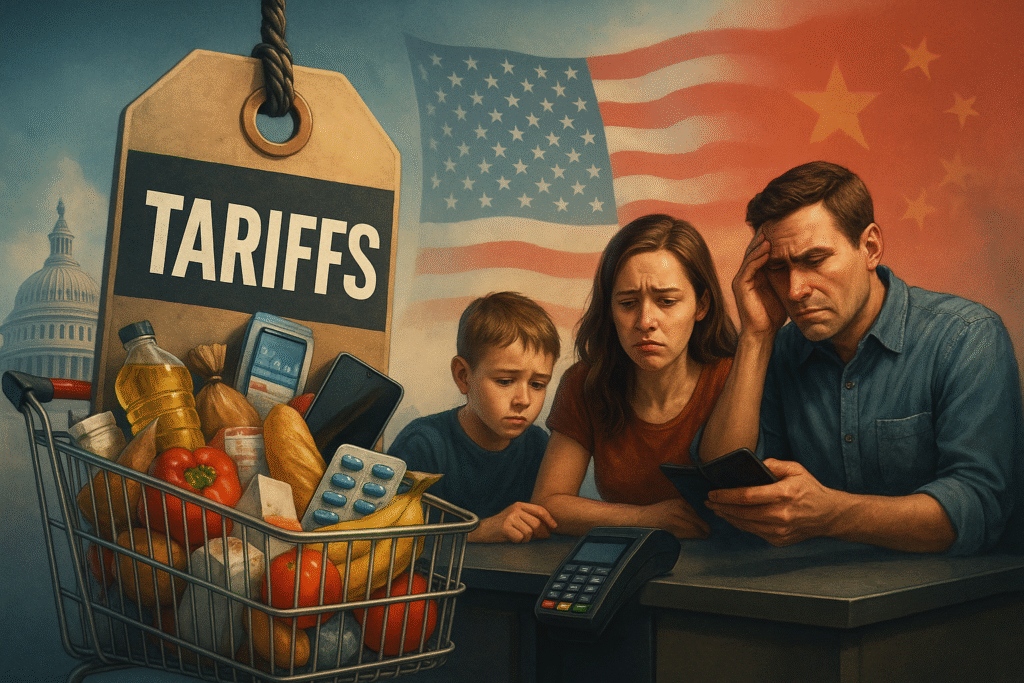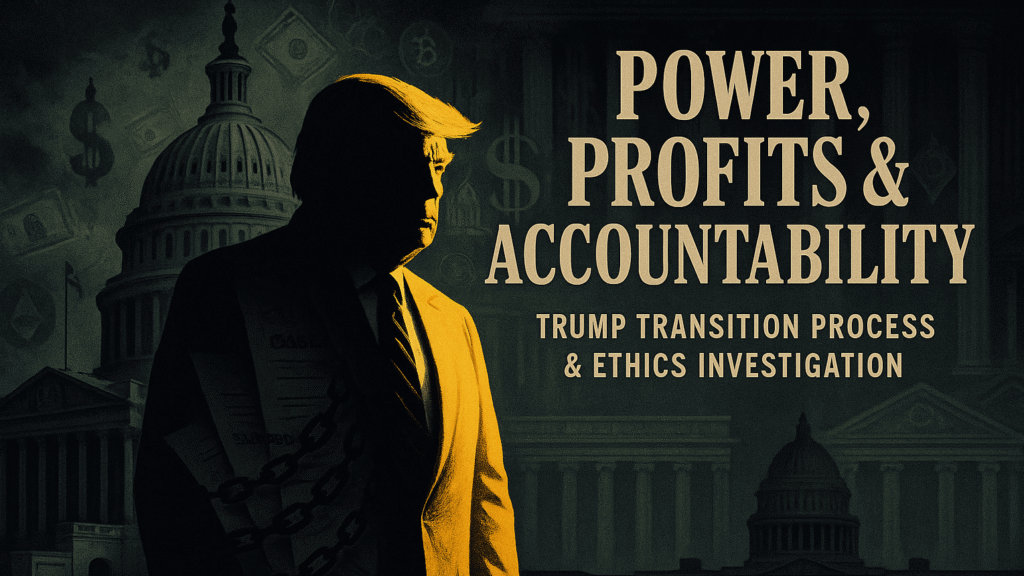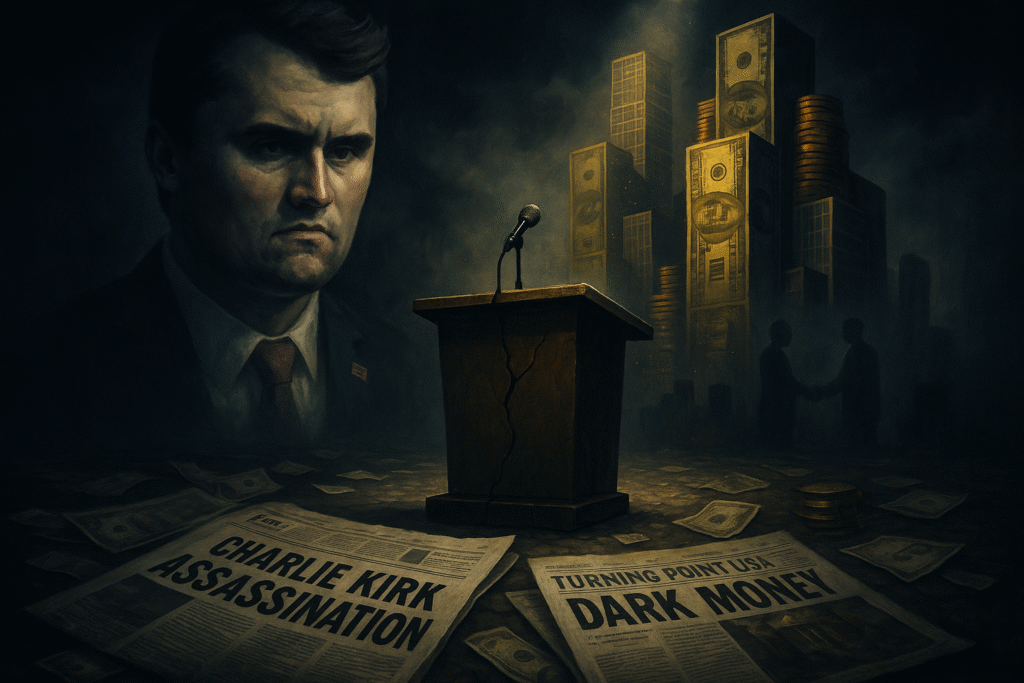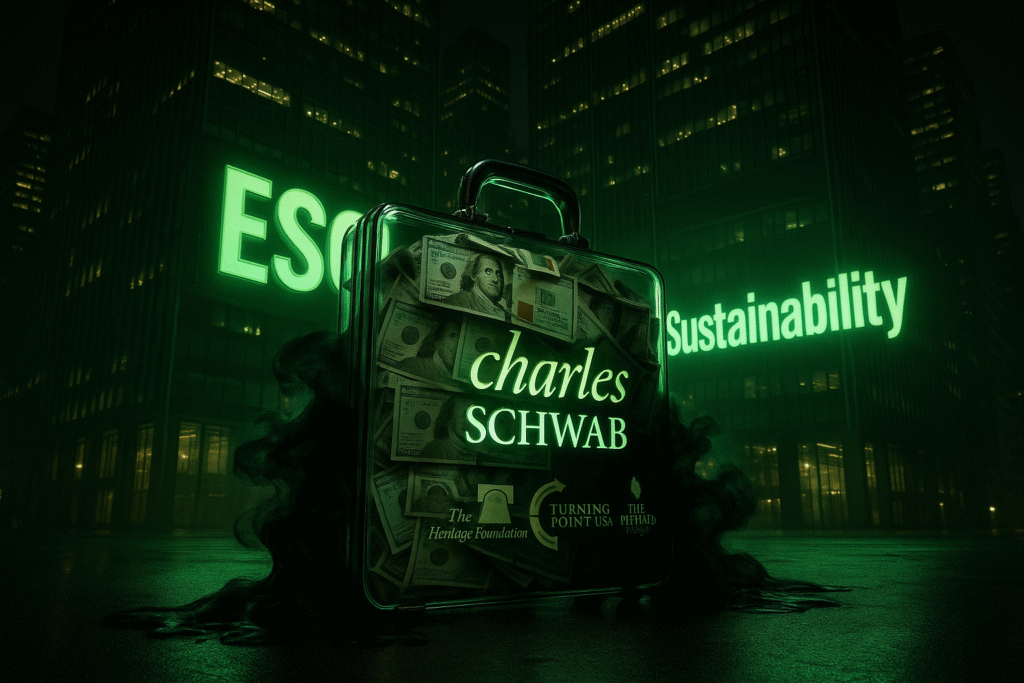When President Donald Trump unveiled his “America First” trade policy, tariffs were marketed as the silver bullet. The promise was simple and powerful: foreigners pay for tariffs, not Americans. These levies, he argued, would make China and other trading partners bankroll U.S. prosperity while protecting domestic jobs.
But behind the patriotic rhetoric lay a far harsher truth.The costs of Trump’s tariffs have primarily impacted American farmers, businesses, and consumers rather than other nations. And the repercussions go beyond price tags; they affect international alliances, national security, and the stability of the American economy itself.
The Myth of Foreign Payment: Americans Foot the Bill
The most enduring myth of the Trump era was the claim that foreigners pay for tariffs. In reality, tariffs are taxes on imports. And who buys those imports? Americans.
Economic studies make it plain: the brunt of tariff costs are passed directly to U.S. consumers and businesses through higher prices on everyday essentials, groceries, medicine, cars, electronics, furniture, and even children’s toys.
- The average U.S. household has seen costs rise by over $1,200 annually.
- Tariffs fueled core inflation surges, hitting 3.1% and projected to reach 3.8%.
- By 2025, U.S. consumers were shouldering up to 67% of all tariff costs.
Small businesses, without the margins to cushion these hikes, have been among the hardest hit. Import duties hit $19.3 billion in April 2025 alone, over three times the 2018–2019 peak.
So, while Trump told crowds that foreigners pay for tariffs, the American people kept swiping their cards to cover the bill.
The Agricultural Betrayal: Farmers as Collateral Damage
Trump’s trade war also inflicted a devastating blow on American farmers, ironically, one of his strongest voter bases.
When Washington imposed tariffs, trading partners struck back. China’s retaliatory tariffs on U.S. soybeans caused exports to plummet, leading to $26 billion in farmer losses between 2018 and 2019. The Trump administration scrambled to plug the hole with $28 billion in taxpayer-funded bailouts, but this was a Band-Aid on a gaping wound.
The damage didn’t stop with soybeans. Canada, China, and others retaliated against U.S. chicken, wheat, corn, and cotton.Rural America paid a heavy price for a political gamble marketed as economic patriotism, as output decreased and jobs disappeared. South Africa’s tariffs compromised thousands of American agricultural employment as late as July 2025, demonstrating that the effects are still being felt today.
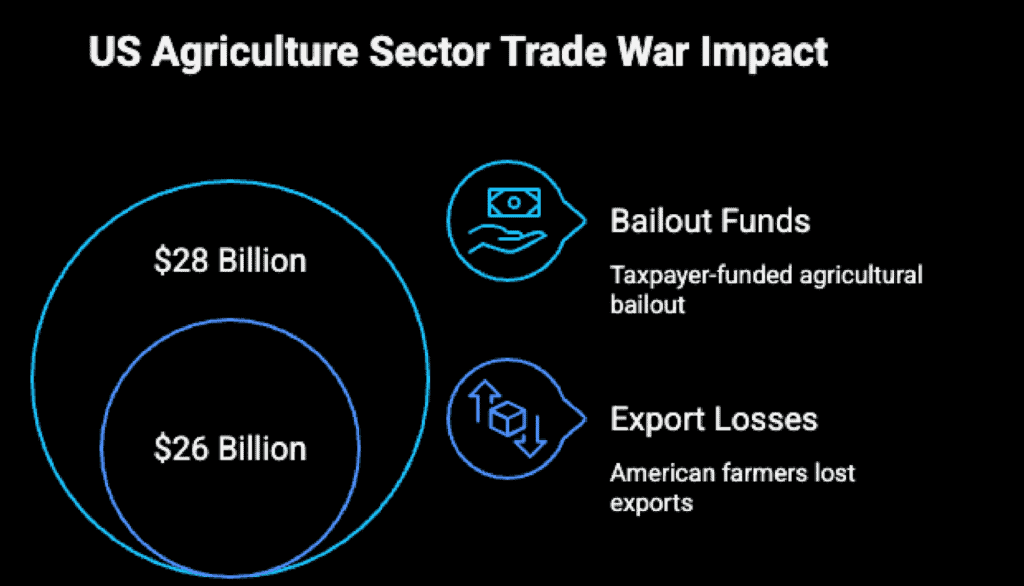
Semiconductor Extortion – National Security as a Bargaining Chip
The most cynical twist in tariff policy is probably seen in the semiconductor industry. Trump announced 100% tariffs on foreign-made chips, threatening rates as high as 300%. The catch? Exemptions for companies willing to build manufacturing plants in the U.S., especially in politically strategic states.
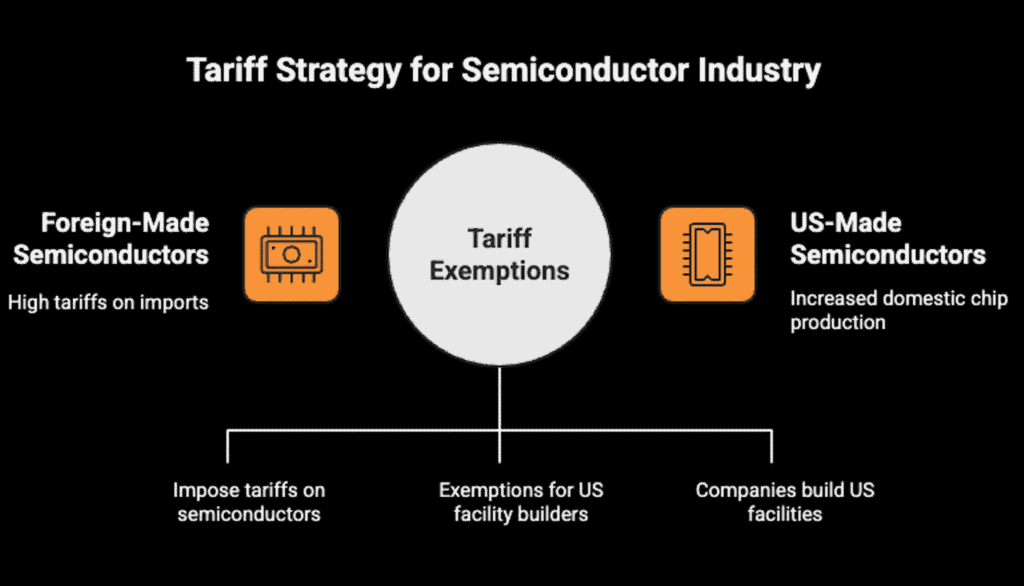
Global giant TSMC (Taiwan Semiconductor Manufacturing Company) was strong-armed into billions in U.S. investments, including an Arizona facility. While sold as a national security measure, critics argue it drained Taiwan’s strategic “silicon shield” and risked eroding confidence in U.S. protection.
In short: tariffs became less about security, more about political theater.
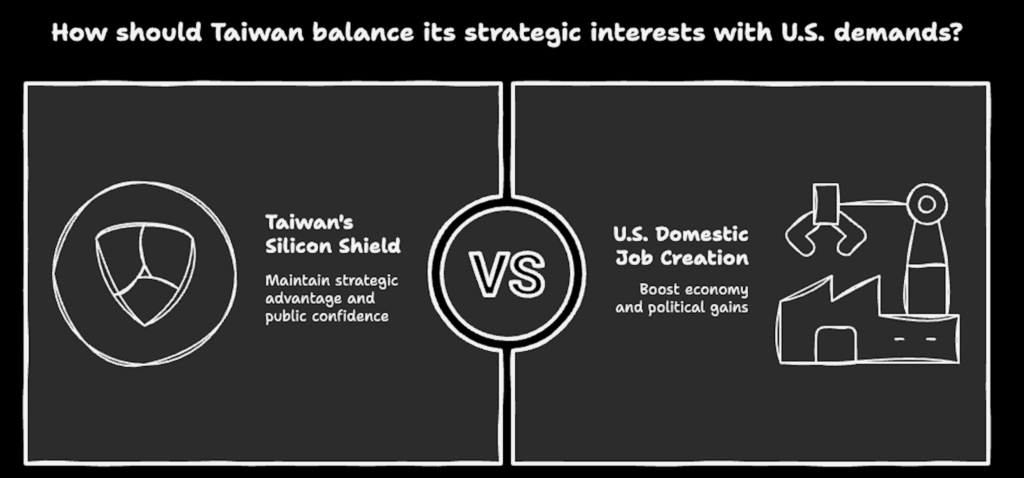
The Economic Illusion: GDP Downgrades and Job Losses
Trump vowed tariffs would shrink deficits and create jobs. The opposite happened.
- The U.S. effective tariff rate soared from 2.3% in 2024 to 18.2% in 2025, the highest since 1934.
- The Fed, OECD, and World Bank all downgraded U.S. GDP growth.
- The economy is projected to be 0.4% smaller long-term, a loss of $115 billion annually.
- By 2026, unemployment is expected to rise 0.7 points, with nearly half a million jobs lost.
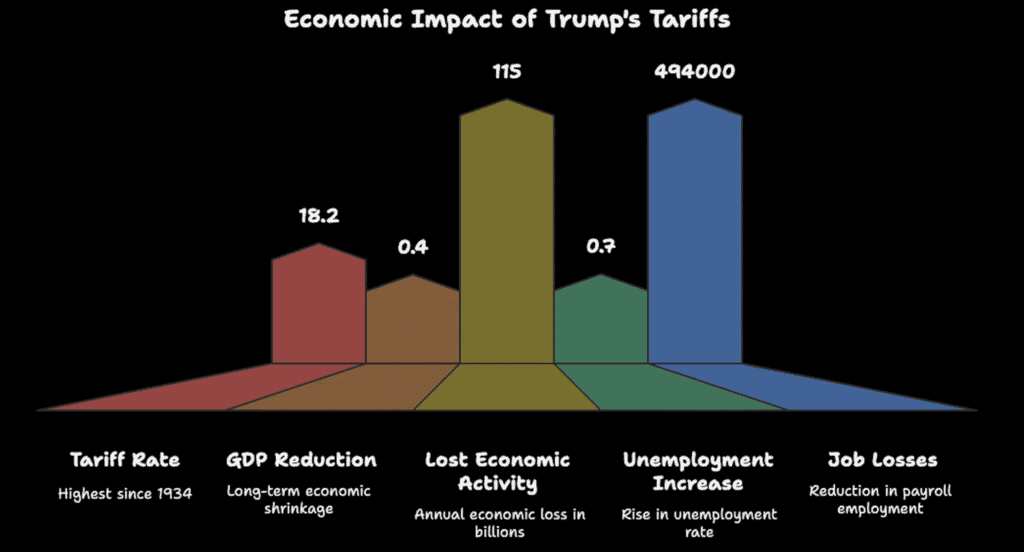
Instead of an economic revival, tariffs created an economic illusion, short-term appearances masking long-term damage.
Tariffs as Political Weapons
What becomes clear when you cut through the spin is this: tariffs were never just about trade. They evolved into tools of campaign pledges, political power and private profit. National security, agriculture, and everyday consumers were pawns in a much larger game.
The grand narrative of “foreigners pay for tariff” was a deliberate illusion, one that left Americans carrying the heaviest burden.
The True Cost of the Tariff War
The Trump tariff experiment stands as one of the most expensive political lies in modern U.S. history. Rather than foreigners paying, it is American households, farmers, and businesses who bear the hidden tax.
Tariffs have:
- Raised consumer prices, fueling inflation.
- Devastated agricultural communities.
- Compromised strategic industries for political bargaining.
- Shaved billions off U.S. economic growth and jobs.
The big tariff lie wasn’t just about money, it was about trust. By weaponizing trade policy for political optics, Americans were left with fewer jobs, higher bills, and a weaker economy, all while being told that foreigners pay for tariffs.
Explore More
Trump Transition Process and Ethics Battles: Power, Profits, and Accountability
The corridors of power are rarely transparent. They are shaped by promises made in public,…
The Shocking Truth Behind Charlie Kirk and Turning Point USA’s $250 Million Conservative Empire
The Charlie Kirk assassination on September 10, 2025, during a campus event at Utah Valley…
Charles Schwab and the $171 Million Secret Behind Wall Street’s ESG Facade
How Charles Schwab and other financial giants bankroll climate denial while selling sustainability to investors?…
Do Foreigners Pay for Tariffs? The Truth About Who Really Bears the Cost
When President Donald Trump unveiled his “America First” trade policy, tariffs were marketed as the…
Did Trump’s Tweet Make Charles Schwab $2.5 Billion Richer?
A cryptic three-word tweet from Donald Trump “THIS IS A GREAT TIME TO BUY!!!” sent…
The Files They Buried: How the Jeffrey Epstein Case Exposes a Broken Justice System
What if the truth was never lost, just buried? Years after Jeffrey Epstein’s shocking death,…

